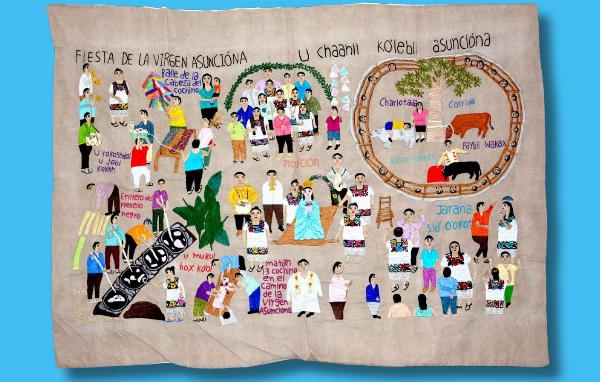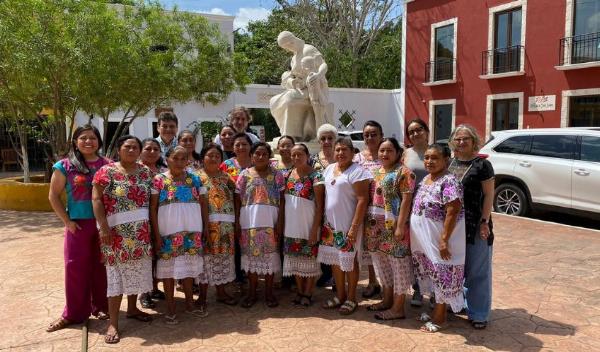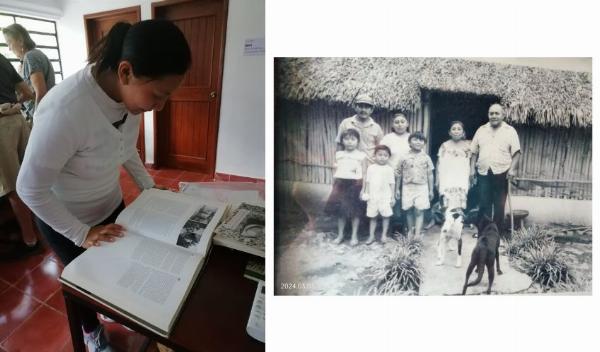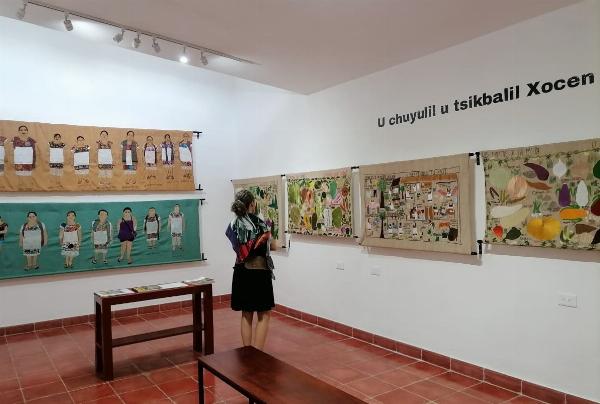U chuyulil u tsikbalil Xocen
The story of a Mayan people is told through embroidery
 Publicado: 05-11-2023
- Tempo de leitura: 2 minuto
Publicado: 05-11-2023
- Tempo de leitura: 2 minutoIn Xocén, a Mayan community located just 12 km from Valladolid, traditions and ancestral practices are not preserved in a legendary past but rather are fundamental living forces of contemporary life.
The exhibition U chuyulil u tsikbalil Xocen, opening at MUREM on 11 November, shares the history, ceremonies, and everyday activities of Xocen through a series of 12 charming embroidered tapestries, 75 x 110 cm. Milpero Gaspar Canul Nahuat, created the themes and texts in Mayan and Spanish for each tapestry. His son, Laureliano Canul Couoh, formed his father´s stories into a visual narrative, and Gaspar´s wife, Balbina Couoh May, along with Anacleta Canul Noh, Jacinta Noh Pech, María de Jesús Canul Noh, Germina Noh Pech, and Francisca May May brought color and life to the tapestries through their expert embroidery skills.
One tapestry, Encuentro de dos Culturas, presents the Santísima Cruz Tun, Xocen´s ancient and holy stone cross that is visited by pilgrims from throughout the Mayan world and as far away as central Mexico. It illustrates the synchronistic way that Mayan traditions were blended with the Catholic practices of the Spaniards, often in a way that hid their pre-conquest significance. Legends, like those of the temptress La X´tabay and scary shapeshifter Way Chivo are also a part of the rich detail of these tapestries.
Another illustrates a woman´s responsibilities in the maintenance of her home--sewing, cooking, cleaning, and taking care of her garden, and her family. Her husband´s responsibilities are shared in the tapestry of the milpa, the cornfield, and the work that is involved in cutting and clearing of the land, the sowing of the seeds, and the relationship that the milpero has with the gods who give water and protection to the crops.
Tapestries overflow with the fruits, vegetables, and other plants grown in the milpa, in the solar or kitchen garden, as well as medicinal plants. Accompanying texts detail how they are planted and harvested, as well as how they are prepared for consumption or use. Two additional tapestries feature portraits of the embroiderers as well as other embroiderers of Xocen drawn by the artist Elena Martínez Bolio and self-embroidered by each of the women.
This exhibition, organized by anthropologist Christian Rasmussen, will be on view in MUREM´s Larsen Gallery from November 11, 2023 to February 11, 2024
MUREM
Share it | | Whatsapp



